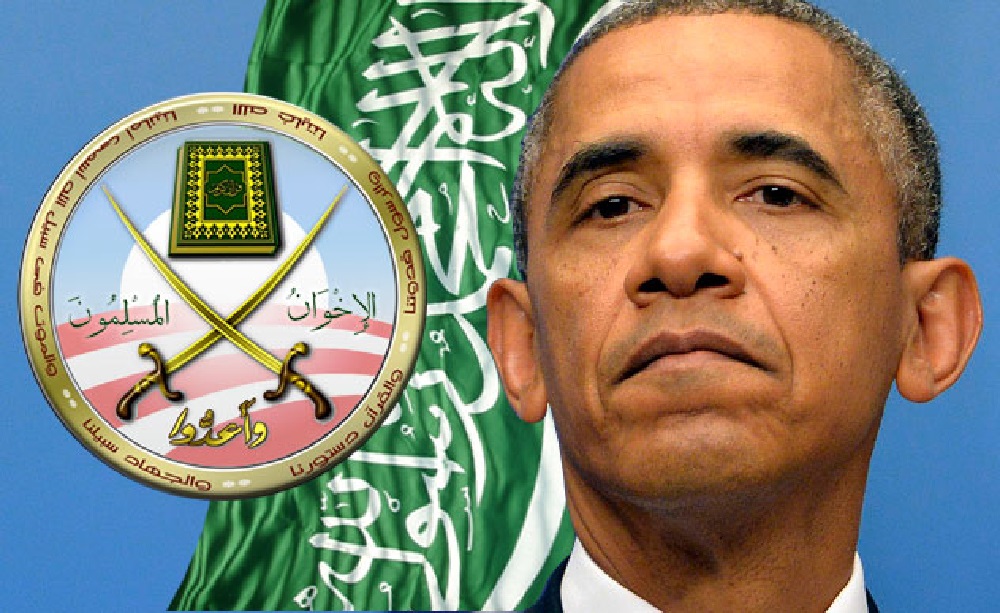Setting America Free
When President Bush met with Saudi Arabia’s Crown Prince Abdullah, the subject on which they spoke most was not the war on terrorism or even the Wahhabi penetration (through the federally funded Muslim Chaplaincy Program) of American colleges and the American military establishment. It was about oil and lowering of the cost per barrel.
There is no doubt that American foreign policy was always based upon the security of our oil reserves especially if those reserves happened to lie under the Arabian desert. But there are now other considerations that must be taken into account. According to former CIA agent Robert Baer in his disturbing book “Sleeping with the Devil”, half of Saudi Arabia’s proven oil reserves are contained in only eight oil fields with the most vulnerable point being a mere twenty-four miles inland from the Gulf of Bahrain. Should terrorists hit a few points downstream from these eight fields, they could put the world’s largest oil producer out of business for about two years. Production would slow from 6.8 million barrels per day (bpd) to a mere million barrels, a loss equal to one third of America’s daily consumption. Crude oil prices could rise from $40 a barrel to $150 and the American economy would collapse. What’s worse, based upon documentation uncovered in Afghanistan and Iraq, Al Qaeda knows this too – just as they knew the structural defects of the World Trade Center prior to 9/11. Time is no longer on our side.
–break–
For that reason alone, it is critical for our country to curb it’s petroleum appetite not just to help it’s economy, curb it’s foreign debt, and address it’s trade imbalances, but more importantly to lower the world price of oil, and prevent America from being held hostage by a group of failed Arab states that have, for too long, kept their people illiterate, impoverished, and hateful solely due to the oil beneath their feet. It’s time for us to take our economy back – to free us from Arab blackmail.
According to some oil-industry executives, even without a terrorist attack o the Saudi oil wells, a barrel of oil could hit a high mark of $75 within the next few years. The tragedy is that America has the technology to produce cars that can achieve 500 miles per gallon (according to a recent article by Fareed Zakaria in Newsweek). Given that our dependence on foreign oil carries significant political (not to mention environmental) dangers, it is more than a mistake to base so much of our political and economic future upon a single resource controlled by another foreign power. Strategically, it is a recipe for disaster.
Zakaria notes that it is now possible to build cars that are powered by a combination of electricity and alcohol-based fuels, with gasoline only one element among many. In effect, within four years, the average new American car (due to new semiconductor technology) could get between 300 and 500 miles per gallon of gasoline.
Today, hybrid technology is the answer to the petroleum problem. It is possible to buy a hybrid car that runs both on a battery and gasoline. The next step is “plug-in” hybrids, with powerful batteries that are recharged at night like laptops, cell phones and iPods. Ford, Honda and Toyota (for example) already make simple hybrids. Daimler Chrysler is introducing a plug-in version soon. In many states in the American Midwest, one can buy a vehicle that can use gasoline, ethanol or methanol in any combination. Ford, for example, makes a number of its models with “flexible-fuel tanks.” (Forty percent of Brazil’s new cars have flexible-fuel tanks.) Put all this technology together and one can build the car of the future today – a plug-in hybrid with a flexible-fuel tank.
The current crop of hybrid cars can achieve 50 miles per gallon. With plug-in technology, that can be increased to 75 miles. If the conventional fuel tank can be replaced with a flexible-fuel tank that can run on a combination of 15% gasoline and 85% ethanol or methanol, efficiency can be increased to between 400 and 500 miles per gallon of gasoline.
The problem is that large companies in the oil and automotive industry have vested interests and are loath to move from their “comfort zones.” There are transition costs that would have to be incurred (gas stations will need to be refitted to pump methanol and ethanol at a cost of $20,000 to $60,000 per station) and proponents of these new technologies have few lobbies in Washington.
Truth is, it was federal military funding and spending that produced much of these technologies in the first place so it is fallacious to argue that the private sector alone should bear the brunt of the cost. In fact, all new naval surface ships are now electric-powered as are big diesel locomotives and mining trucks. Estimates are that a government plan that could accelerate the move to a hybrid transportation system would cost $12B dollars.
That is what we spend in Iraq in about three months.
Without exaggeration, the widespread availability of such cars – and the alternative fuels they would utilize – would literally change the future of America. Our enemies would be denied the geo-strategic leverage they currently enjoy, as indigenously produced energy sources derived from coal, biomass and garbage would undermine the cartel’s control of the commodity upon which our transportation sector heavily depends. Creating diverse alternative fuel sources here at home is, simply put, a national security imperative.
Zakaria envisions a new Manhattan Project on energy independence that will, for an investment by the federal government of $12B over the next four years, translate into a reduction of at least 50% in projected oil imports by 2025. There is now such a blueprint for energy security in existence (www.setamericafree.org). This blueprint envisions allocating $2B for automotive manufacturers to cover 50% of the costs of building flexible fuel vehicle-capability (that is, cars that can use ethanol or methanol-based fuels) into their new cars (i.e. roughly 40 million cars at $50 per car); $1B to pay for at least one out of every four existing gas stations to add at least one pump to supply alcohol fuels (an estimated incentive of $20,000 per pump, new pumps costing approximately $60,000 per unit); $2B in consumer tax incentives to procure hybrid cars; $2B for automotive manufacturers to commercialize plug-in hybrid electric vehicles (that is, cars that can be plugged into an electrical grid to recharge their batteries); $3B to construct commercial-scale demonstration plants to produce non-petroleum based liquid fuels (utilizing public-private cost-sharing partnerships to build roughly 25 plants in order to demonstrate the feasibility of various approaches to perform efficiently at full-scale production); and $2B to continue work on commercializing fuel cell technology.
In an age where foreign policy is shaped to a great extent by oil, it is time to set America free, and to look for energy not just from the Middle East but from the American Midwest….and it is past time for the failed Arab states of the Middle East to move from the 11th century into the 21st not because they desire to do so, but because they will have no other choice.



